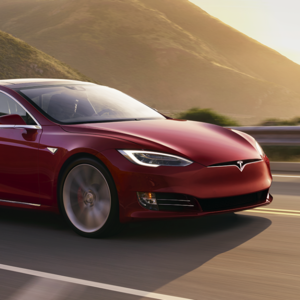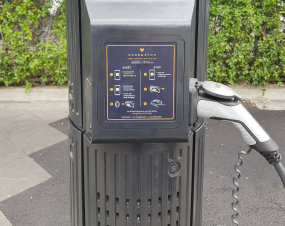In 1967 the Harrier GR1, the ‘Jump Jet’, entered service in the British RAF as the world’s first VTOL (vertical take-off and landing) jet aircraft. By facing its jets straight down and firing at full thrust, the Harrier could take off in a perfect vertical ascent, burning about two litres of jet fuel every second in the process.

But, like the SR-71 Blackbird and the B-2 Stealth Bomber, the Harrier’s notoriety had more to do with its eye-catching and gravity-defying stunts than its use in combat. 28 Harriers were flown from British carriers during the Falklands War in 1982, and again in Afghanistan during the 2000s, but the RAF nonetheless decommissioned their fleet to save costs in 2011.
Of the other countries that used Harriers — The US, India, Italy, Spain, and Thailand — only Spain still operates the aircraft, and only because they couldn’t afford replacements in the wake of the GFC. Today, VTOL aircraft are considered generally redundant for most military applications; short-takeoff jets and drones now fulfill the tasks formerly assigned to the Harrier. And, of course, there are always helicopters.
A new horizon
But the demise of the Harrier was not the end for the VTOL dream. In 2016, Uber released a whitepaper outlining their ambition to bring electric VTOLs to market as “on-demand air transportation” to complement their rideshare fleet. The Uber Elevate program was soon joined by a host of startups and other corporate heavyweights in the race to make these ‘flying electric cars’ commercially viable.

Uber air taxis set for Melbourne
By doing away with fuel-hungry and high-maintenance jet engines in favour of motors, electric VTOLs are, in theory, able to overcome many of the obstacles that have restricted jet VTOLs from commercial use thusfar. Predictably, investment in the technology has been immense. A host of speculation, prototypes and public listings have followed the hype through much of the late-2010s.
United Airlines made headlines this week with a $1 billion USD order for electric VTOLs from startup Archer. The announcement states their intention to use 200 of these machines to transport their passengers to US airports as soon as 2024.
Crashing down
But all this is, of course, speculation; corporate PR and hype which has disappointed before and certainly will again. Flying cars? Let’s be real.
Uber sold off both their autonomous vehicle and VTOL divisions last December, ostensibly in a move to become profitable in 2021, but, even with their losses narrowing from $8.51 billion in 2019 to $6.77 B in 2020, they’ve got a long way to go.
Likewise, the immense deal between United Airlines and Archer is far from locked in. Included in the contract is a particularly revealing clause:
“Neither Archer nor United has any duty or obligation to agree on any of the Material Terms. Further, and in addition to other termination rights set forth in the Purchase Agreement and the Collaboration Agreement, if the parties do not agree on Material Terms, either party will have the right to terminate the agreements if such party determines in its discretion that it is not likely that the Material Terms will be agreed in a manner that is consistent with such party’s business and operational interests (as those interests may change from time to time).”
That is to say, if United decides that the electric planes aren’t shiny enough, the whole $1B deal is over.
And, even if we take Archer’s claims about their electric VTOLs at face value, the stats are hardly inspiring. With a 143 kWh useable battery capacity, the craft will have an effective range of 96 km total. Presumably that will demand a full recharge after every trip, and maximum trips extending within a single city at most.

Making it work
The obvious weak link in electric VTOL projects is the same as it is for any other electrified transport application. It’s not the moving parts and the maintenance; electric motors have functioned more-or-less the same way for over a century. It’s not the difficulty of piloting them; there is no reason that pilots can’t be trained to fly these craft as readily as they are for planes or helicopters.
The limited range of VTOLs, like other EVs, stems from the enormous weight in batteries required to keep them in the air. The 187 kWh batteries in Archer’s VTOLs should weigh over 2.3 metric tonnes, based on their claimed power-to-weight ratio of 80kWh/1000kg, slightly higher than that of a Tesla Model 3. Increasing this ratio, and thereby reducing the weight of the batteries, might drastically improve the utility of the electric VTOL.

Chasing the perfect electric vehicle battery
Of course, the actual capacity and stability of the aircraft isn’t the only obstacle that needs to be overcome in order to see on-demand air shuttle services. Pilots may be available and capable of flying VTOLs, but they aren’t cheap. The insecure employment practises that have sustained the affordability of rideshare are unlikely to translate to air transport — the car-comparable pricing that Uber claimed in 2016 are a pipe dream so long as VTOLs require trained pilots to operate.
And, in order to use its city-wide flight range, the on-demand VTOL requires a city over which to fly. Specific rules for electric aircraft are nonexistent in most jurisdictions around the world, and existing helicopter regulations are hardly friendly to commerce. Whether investment and lobbying are enough to bridge that gap remains to be seen.
And, ultimately, that’s the best that can be said for almost anything to do with electric air travel, VTOL or otherwise: “It remains to be seen.” With every deal that gets made, widely publicised and then quietly canned, a certain amount of skepticism must follow. eVTOLs have not had decades of public airshows to build up enthusiasm; they can’t be mourned without the decades of awareness that the Harrier had.
For now, it’s best to assume that flying cars are off the table, regardless of how straightforward the engineering seems or how immense the piles of money being poured into VTOL rotors might be.



